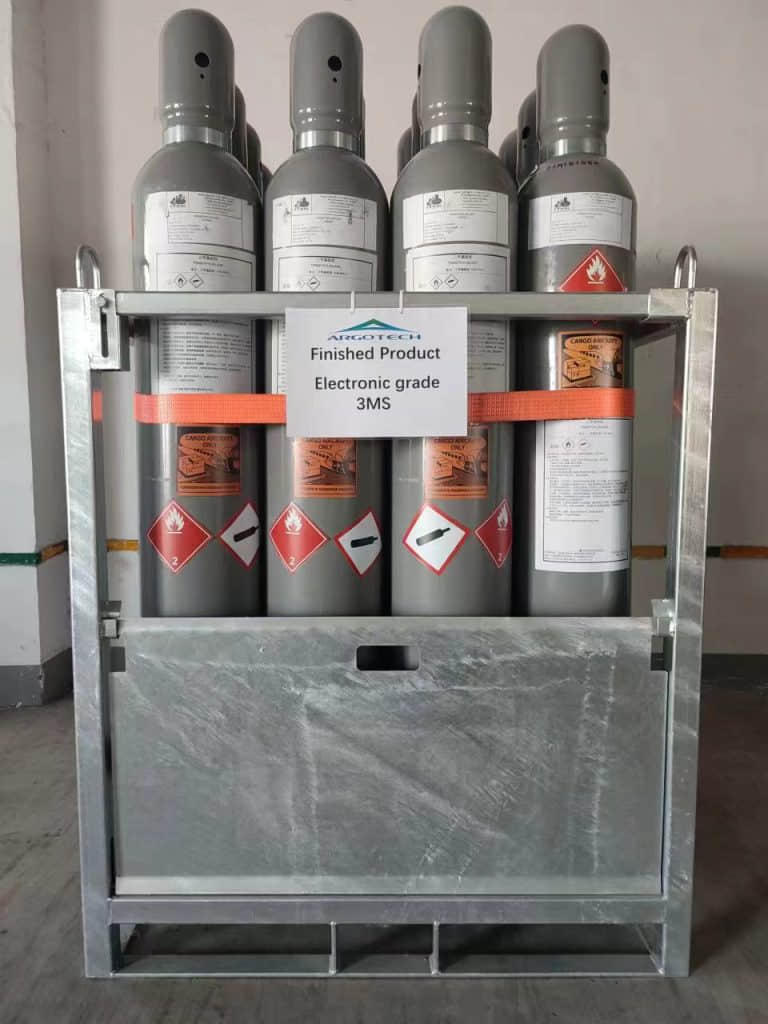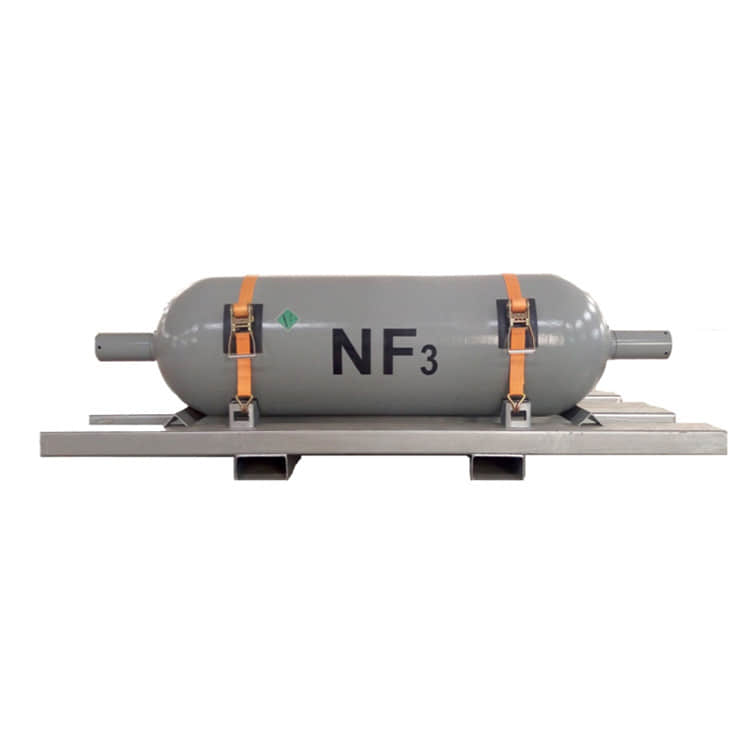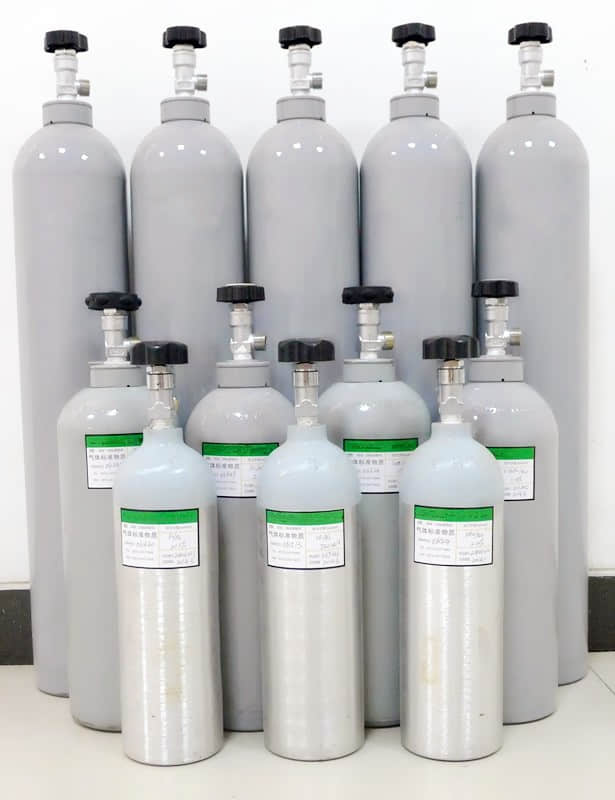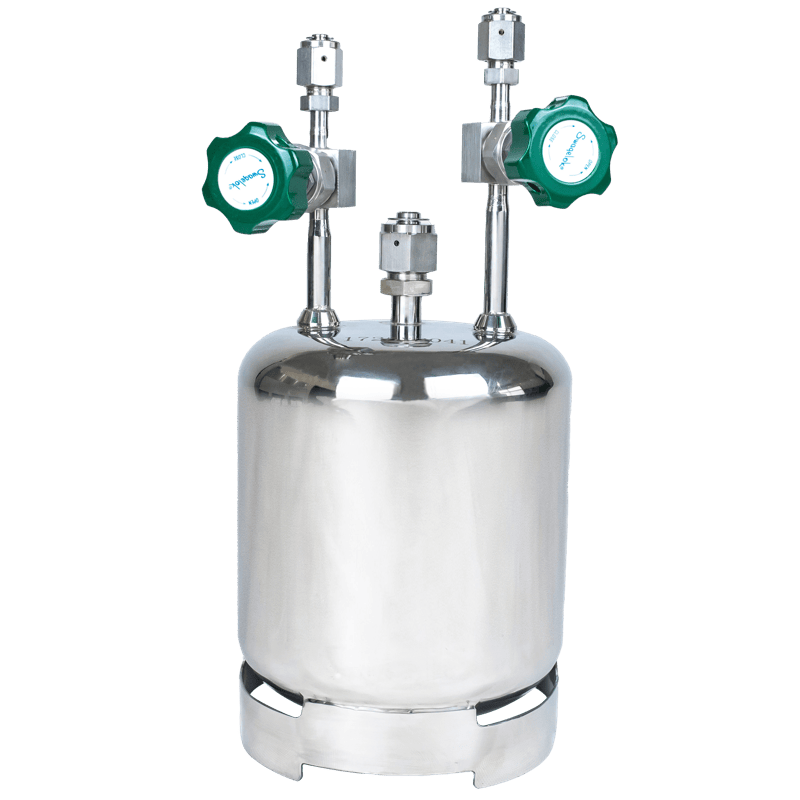Applications of trimethylsilane
In the semiconductor industry, trimethylsilane (TMS) is primarily used in chemical vapor deposition (CVD) and physical vapor deposition (PVD) processes to manufacture high-purity silicon films and other thin film materials.
In the CVD process, trimethylsilane is often used as a precursor to react with other gases, such as ammonia, to form silicon-carbon-nitrogen (SiCN) or silicon-like (SiC) films. These films have good insulation properties and corrosion resistance, so they are commonly used as a protective layer or an etching stop layer for semiconductor devices. Especially when copper atoms or copper ions are easily diffused to the low dielectric constant dielectric layer under thermal annealing or electric field conditions, the diffusion barrier layer formed by trimethylsilane can effectively prevent the diffusion of copper, and further reduce the effective dielectric constant of copper interconnection dielectric layer.
Electronic Grade Trimethylsilane Applications
Electronic Grade Trimethylsilane is a high-purity organic silicon compound mainly used in the electronics and microelectronics industries.
Firstly, electronic grade trimethylsilane is a highly purified organic silane, with impurity content strictly controlled within an extremely low range. This high purity makes trimethylsilane widely used in the microelectronics industry because it can resist high temperatures and chemical corrosion, while also possessing good thermal and chemical stability.
Secondly, electronic grade trimethylsilane has good reactivity and can undergo various chemical reactions. In the microelectronics industry, it is commonly used as an additive for surface treatment agents and photoresists, which can enhance surface wettability and corrosion resistance. In addition, it can also be used to synthesize polymer materials and other organic silicon compounds.
Finally, the storage and use of electronic grade trimethylsilane require special attention. Due to its flammability, it needs to be stored in a cool, dry, well ventilated place away from ignition sources. During operation and use, it is necessary to avoid contact with oxidants, acids, alkalis, and other substances to prevent danger.
Overall, electronic grade trimethylsilane is a high-purity, high-performance organic silicon compound with broad application prospects in the microelectronics industry and other fields. During use, it is necessary to strictly control the impurity content and pay attention to safe operation.
Appearance:
Colorless gas with a slight odor, stable at room temperature and atmospheric pressure.
Type:
Electronic pure 5N
Stability and reactivity:
May decompose to silicon carbide and hydrogen at high temperatures (above 500 oC)
Composition:
| Substance name | Content | |
| Trimethylsilane | 99,999 | % |
| Hydrocarbons total, not more | 1 | ppm |
| Nitrogen, not more | 1 | ppm |
| Chlorides total, not more | 1 | ppm |
| Carbon dioxide, not more | 1 | ppm |
| Oxygen & Argon, not more | 2 | ppm |
| Carbon monoxide, not more | 2 | ppm |
| Water, not more | 1 | ppm |
Physical properties (reference data):
| Molecular weight | 74,20 | g/mole |
| Density at 20 0C | 0,638 | kg/m3 |
| Melting point | -135,9 | 0C |
| Boiling point | 6,7 | 0C |
| Freezing point | – 135,9 | 0C |
| Major Hazards | Flammable |
Additional information (properties):
– Non corrosive;
– Non pyrophorus;
– Non radio-active;
– LC50 = 9600 ppm/1h






